Two identical particles having the same mass m and charges +q and -q seprately by a distance d in a uniform magnetic field B directed perpendicular to paper inwards with speed and as shown in figure the particles will not colloid if
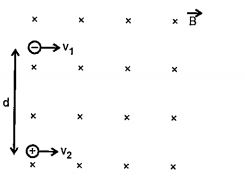 Solution in Bengali
Solution in Bengali
The correct Answer is:C
Step by step video, text & image solution for Two identical particles having the same mass m and charges +q and -q seprately by a distance d in a uniform magnetic field B directed perpendicular to paper inwards with speed v_1 and v_2 as shown in figure the particles will not colloid if by Physics experts to help you in doubts & scoring excellent marks in Class 12 exams.
Updated on:21/07/2023Topper's Solved these Questions
Similar Questions
Two spheres, each having mass m are suspended from a common point by two insulating strings of length l. The spheres are identically charged and the separation between the spheres is 'd' . Find the charge on each sphere.
View SolutionThe permeability of magnetic material is 0.9983. Name the type of material it represents.
View SolutionTwo identical particles having the same mass m and charges +q and -q separated by a distance d enter a uniform magnetic field B directed perpendicular to paper inwards with speeds v_1 and v_2 as shown in Fig. 1.139. The particles will not collide if
View SolutionA particle of charge -q and mass m enters a uniform magnetic field →B (perpendicular to paper inward) at P with a velocity v0 at an angle α and leaves the field at Q with velocity v at angle β as shown in fig.
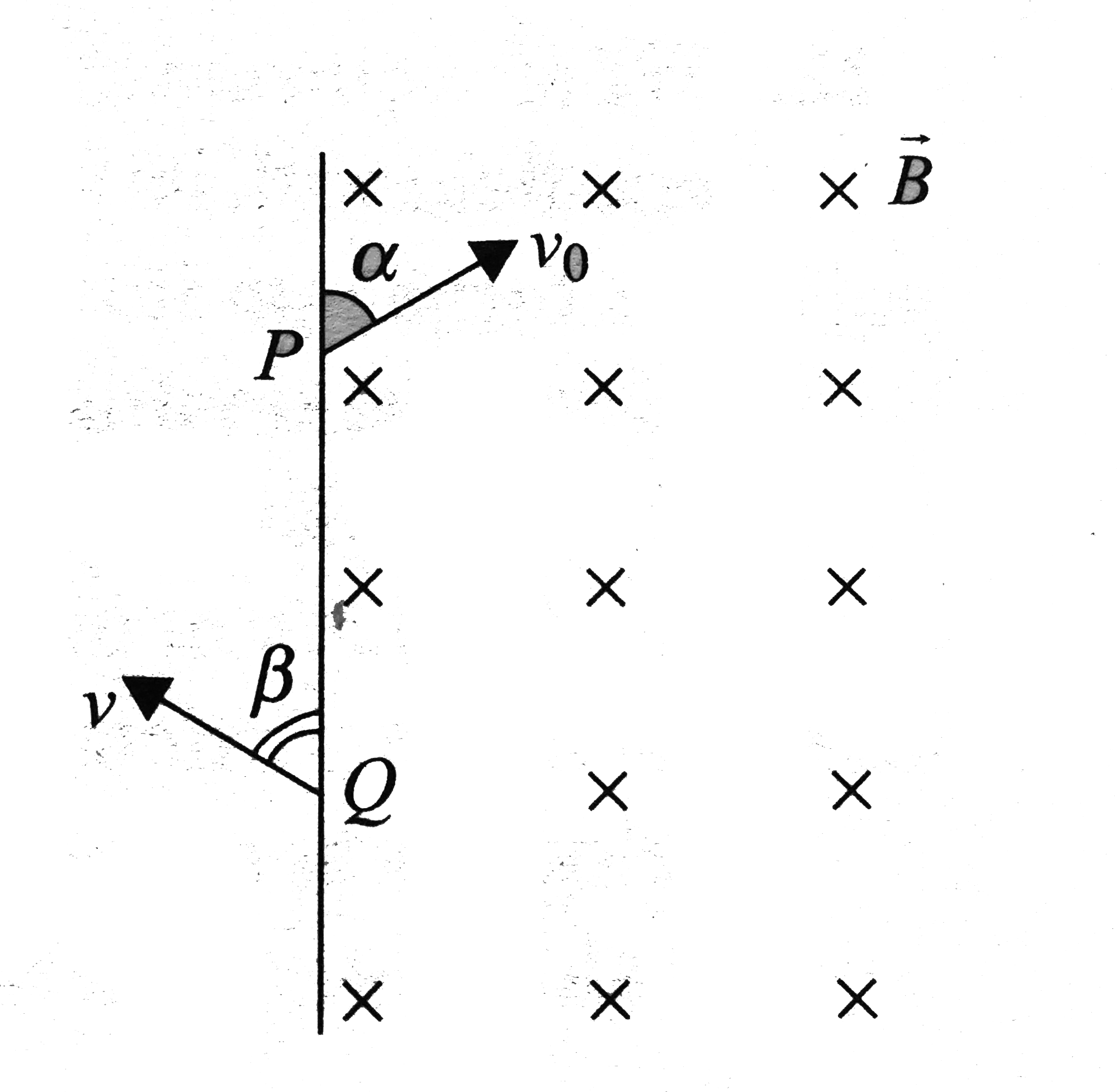
View SolutionA particle having mass m , charge q enters a cylindrical region having uniform magnetic field B in the inward direction as shown. If the particle is deviated by 60^(@) as it emerges out of the field then what is the time spent by it in the field?
View SolutionA positively charged particle of charge 'q' enters in a uniform magnetic field B directed inward and is deflected a distance x after travelling a distance Y as shown in the figure. The magnitude of linear momentum of the particle is:
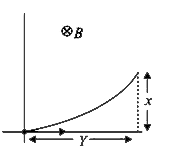
View SolutionTwo particles A and B of masses mAandmB respectively and having the same charge are moving in a plane. A uniform magnetic field exists perpendicular to this plane. The speeds of the particles are vAandvB respectively and the trajectories are as shown in the figure. Then -
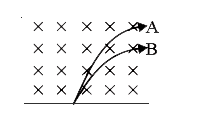
View SolutionA charged particle is moving in a magnetic field of strength B perpendicular to the direction of the field.If q and m denote the charge and mass of the particle respectively, then the frequency of rotation of the particle is
View SolutionA charged particle is moving in a magnetic field of strength B perpendicular to the direction of the field. If q and m denote the charge and mass of the particle respectively, then the frequency of rotation of the particle is
View Solutionद्रव्यमान m व आवेश q का एक कण एक समान चुम्बकीय क्षेत्र में v वेग से क्षेत्र की दिशा के लम्बवत् प्रवेश करता है। कण का घूर्णन काल
View SolutionTwo identical particles having the same mass m and charges +q and -q separated by a distance d entering a uniform magnetic field vecB as shown in the figure. For what value of d the particles will not collide.
View SolutionTwo particles A and B of mass m_(A) and m_(B) respectively and having the same charge are moving in a plane. A uniform magnetic field exists perpendicular to this plane. The speeds of the particles are v_(A) and v_(B) respectively, and the trajectories are as shown in the figure. Then
View SolutionTwo identical particles having the same mass m and charges +q and - q separated by a distance d enter a uniform magnetic field ¯¯¯B as shown in the figure. For what value of d the particles will not collide?
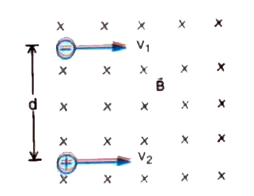
View SolutionTwo identical particles having the same mass m and charges +q and -q separated by a distance d enter a uniform magnetic field B directed perpendicular to paper inwards with speeds v1andv2 as shown in Fig. 1.139. The particles will not collide if
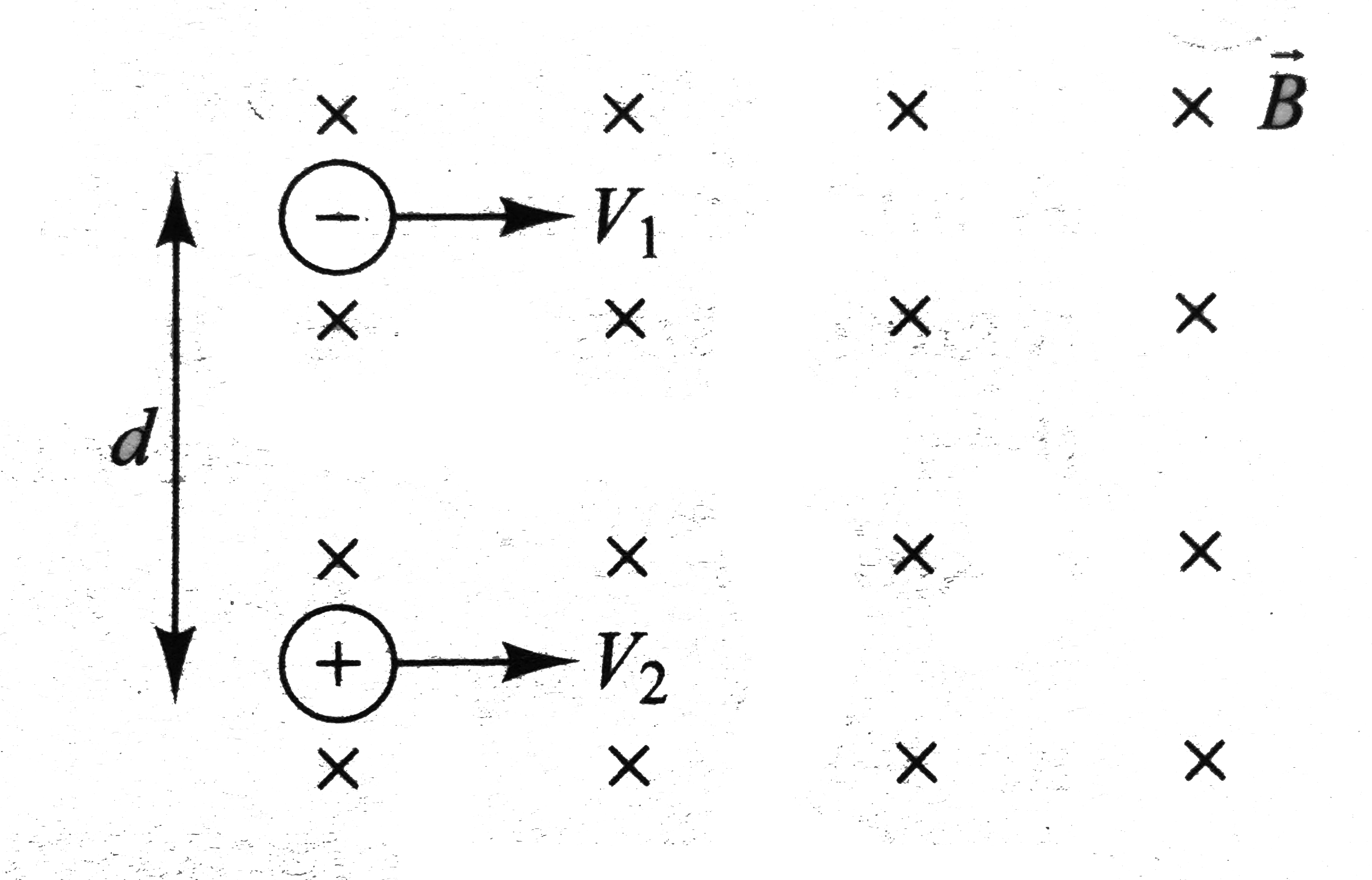
View SolutionA particle of charge -q and mass m enters a uniform magnetic field vecB (perpendicular to paper inward) at P with a velocity v_0 at an angle alpha and leaves the field at Q with velocity v at angle beta as shown in fig.
View Solution